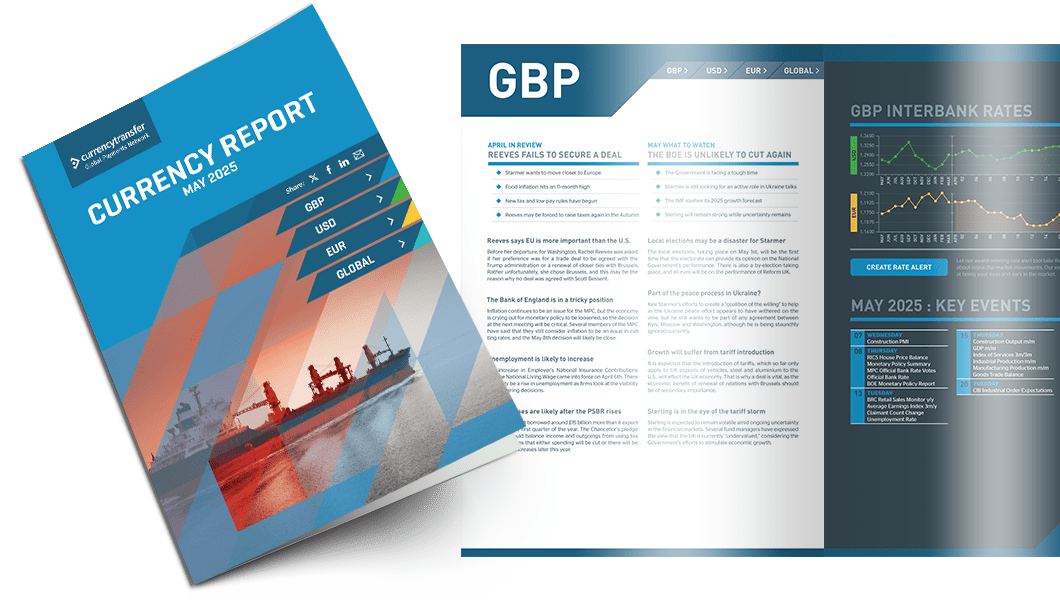
Highlights
- UK forecast to hit 2% inflation target by Spring
- FOMC notes clear progress on inflation
- The Eurozone is still on course for a recession, despite pockets of growth
PM wants to wait until the economic outlook is brighter
These comments coincided with a growing belief that even if the country is shown to be in recession when Q4 GDP is published, the contraction will be shallow and won’t last beyond the first quarter of this year.
A report issued yesterday by Bloomberg Economics showed that inflation should reach the Bank of England’s 2% target by the Spring. This will allow the Bank to cut interest rates, providing a boost to an economy that had been in danger of stagnating.
The Leader of the Opposition, Sir Keir Starmer, made the first of what is sure to be several speeches in which he plans to outline the differences between the two main Parties.
He believes that the country is “crying out for change” and vowed to fight the election with the economy as a central topic.
He is concerned that the electorate is struggling to differentiate between the Conservatives and his Party, due in no small part to the fact that Labour has not yet provided detailed plans about its plans to provide a boost to growth and output by investing in public services and lowering NHS waiting lists.
In his speech yesterday, Starmer struggled to outline differences in the economy, even admitting that any tax cuts would have to wait as Labour prioritizes the economy.
The Bloomberg report showed that energy prices have fallen more rapidly than expected, leaving inflation likely to reach the Bank of England’s target of 2% by late Spring, which means that the Bank will be able to perform the first of several rate cuts during the first quarter.
Interest rates are expected to be cut at least three times this year, with the base rate projected to reach 4% by year-end.
It comes as no surprise that Sunak has chosen to delay the election, as the longer the economy is left to recover, the more likely the country is to believe that he has the right policies to drive the economy forward.
The question of differentiation is a thorny subject for Starmer since history has shown that over the past thirty years, it is only electoral fatigue that has allowed Labour to seize power, while openly socialist policies appear to be a major “turn-off” for voters.
The pound has recovered most of the losses it incurred earlier in the week, but news of an early rate cut is unlikely to attract any medium to long-term buyers. Sterling rose to a high of 1.2728 but ran out of steam and fell back to close at 1.2684.

Read our latest currency report
Most impactful events planned this month and how they could impact your business
The Central Bank’s balance sheet is shrinking at a faster-than-expected rate
This month will be no different, as traders study the reports on job openings, private sector job creation and continuing jobless claims to try to figure out how many jobs have been created when the overall Employment report is published on the first Friday.
The legacy effect of rate hikes that took place last year and the data that has been produced this week has encouraged traders to amend their projections for headline non-farm payrolls from 150k to 170k new jobs created in December.
With inflation now seemingly under control, given the recent comments from the usually hawkish Fed Chairman, a soft landing may well be declared imminently.
It is now close to forty years since employment data became the most eagerly anticipated single monthly data stream, overtaking trade, which had previously been a significant driver for the dollar.
During the intervening period, being able to accurately predict the outcome of the Employment Report has become something akin to alchemy or the search for the holy grail.
Economists have come to accept that their estimates are little more than a best guess, given the number of “moving parts” and estimates that the report contains.
It is difficult to agree on the continued effect of tighter monetary policy on employment, and the lag in the effect of increases or decreases in output and productivity on hiring policy.
More recently, inflation has grown in importance to rival the jobs data, but this is due to the relatively recent changes in monetary policy that consumer price changes have had following many years of low inflation.
The next meeting of the FOMC is scheduled for January 30th/31st.
Since the Fed is already committed to looking at trends in data to make its interest rate decisions, there is no possibility that several new jobs that are considered “outliers” will have any major effect.
If it is higher than expected then interest rates will be considered at the right level, given the continued fall in inflation, while if it is lower than expected it will be considered as having been subject to the “legacy effect” of earlier rate increases.
The dollar index retreated a little from its recent highs yesterday as short-term traders squared positions ahead of today’s data. It initially fell to a low of 102.14 but rallied to close just ten points lower at 102.42.
Eurozone inflation data may cool rate cut expectations
Data published yesterday for both composite and services output rose significantly in December. Although both still depict a contracting economy, the data revealed a marked improvement which, if it continues at its current rate, could mark a return to expansion as soon as next month.
The German economy may well recover, just as most of the Eurozone is still struggling to cope with interest rates which remain restrictive.
The region’s largest economy will then be held up as a blueprint for perseverance and could well lead to pressure on the ECB to start rate cuts.
The level of interest rates will also be seen as a factor in falling inflation, Consumer prices in Germany remained at 3.8% while data for the entire Eurozone, which is due for release today, is expected to show an increase from 2.4% to 3%.
Christine Lagarde has spoken recently of her belief that although the trend for inflation will be lower, its fall is unlikely to be linear.
The data won’t have any effect on the outcome of the next ECB Governing Council Meeting, since Lagarde has already “dampened down” any market expectation of a rate cut before the end of the first quarter.
Across the entire Eurozone, the private sector (households and SMEs) has performed far better overall than the public sector over the past year. This is despite changes to fiscal policy in countries like Italy which have not had a massive effect overall.
Italy is also expected to publish inflation data today, and it is expected that it will remain at 0.7% year-on-year as the continued effect of rate increases bite. This is a reason Italy was fiercely critical of the last two rate increases, and why it has been comfortable adding to its debt-to-GDP ratio.
The euro recouped some of its losses from earlier in the week as the data suggest that rates will remain “higher for longer”.
It rallied to a high of 1.0972 but fell back to close at 1.0949.
Have a great day!

Exchange rate movements:
04 Jan - 05 Jan 2024
Click on a currency pair to set up a rate alert
Alan Hill
Alan has been involved in the FX market for more than 25 years and brings a wealth of experience to his content. His knowledge has been gained while trading through some of the most volatile periods of recent history. His commentary relies on an understanding of past events and how they will affect future market performance.